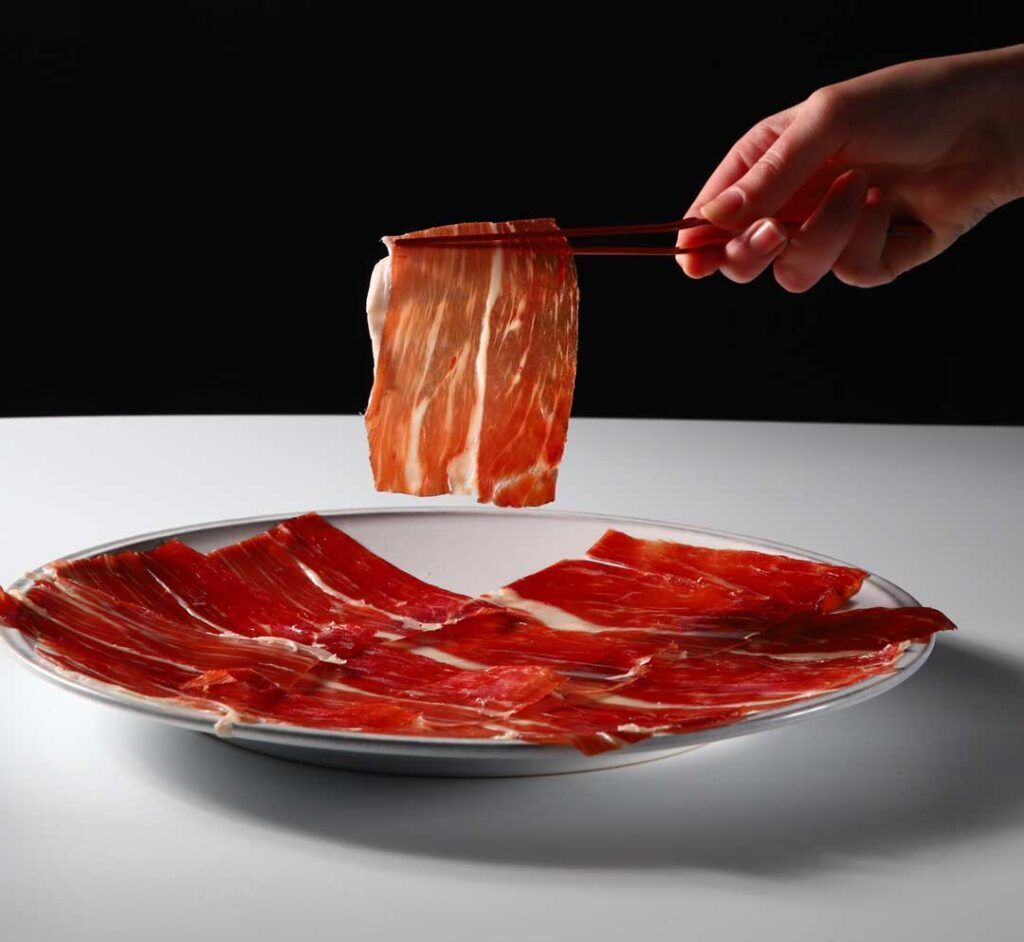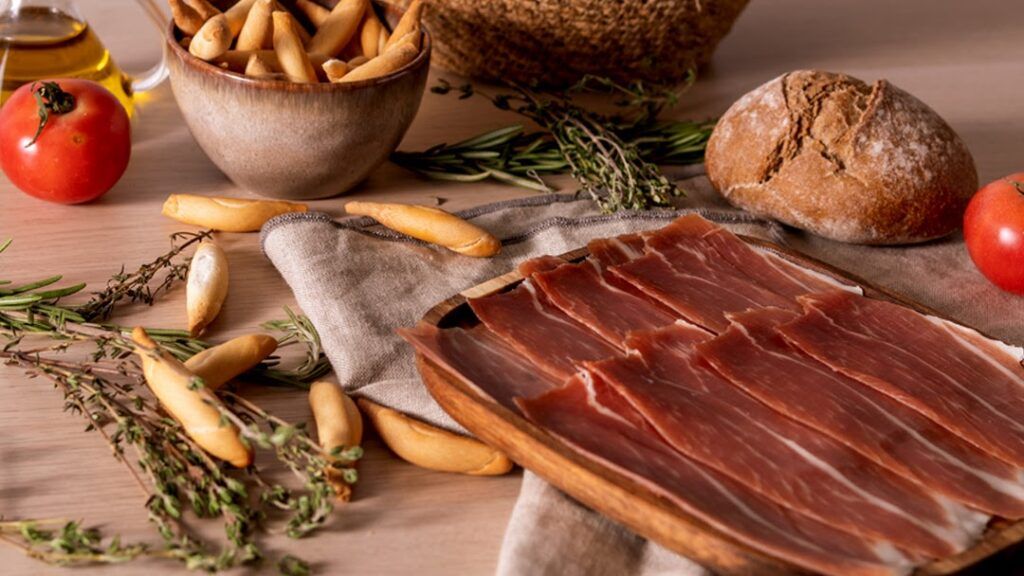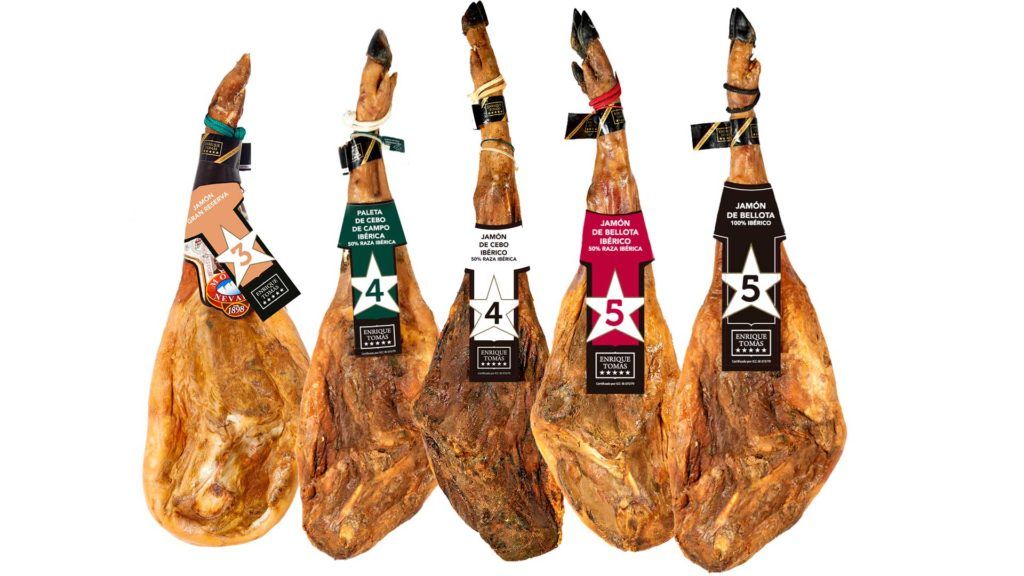
Cured Jamón or Jamón ibérico, what is best?
When it comes to buying or simply enjoying ham, there are many words to consider. "Cured," "Iberian," "serrano," and "bellota" are often the most repeated ones. However, the truth is that there are significant differences between each of them when applied as characteristics of ham.
So, if you're unsure whether there are differences between cured ham or Iberian ham or which one is better, at Enrique Tomás, we're here to explain everything you need to know. This way, the concepts and differences will become clearer, allowing you to speak confidently about what you love most—ham!
Are all hams cured?
The answer is yes. Ham is nothing more and nothing less than the hind leg of a pig subjected to a curing process. Without a doubt, ham is the quintessential cured product, but it's not the only one. Curing is a process of preserving and seasoning food, a procedure applied not only to pork but also to some fish and red meats.
In the past, it was used to extend the shelf life of foods. The fundamental difference lies in the breed; Iberian ham comes from the Iberian breed, while cured ham simply comes from common pigs, often of the white breed. For more practical information, check out our video.
What is needed for curing the meat? To achieve this, a combination of salt, sugar, nitrates, nitrites, and time is required, although there are also curing processes that involve smoking.
The Curing Process
To simplify the curing process, regardless of the type of ham in question, it involves preventing rapid food decomposition by extracting all the water from the interior to hinder the growth of microorganisms. Although it might seem simple, the curing process of a ham is complex and requires the expertise and care of artisans and professionals.
How is it done? Using products like:
Salt
- Eliminates and inhibits the growth of microorganisms by extracting water from cells.
Sugar
- Promotes the growth of beneficial bacteria.
Preservatives
- Help kill bacteria and, in turn, produce a distinct flavor and color.
 Salt curing process
Salt curing process
In conclusion, all hams are cured. While the word refers to the "cooking-preservation" process of the meat, in Spain, cured ham refers to ham from white breed pigs, which is also commonly known as Jamón Gran Reserva.
So, what is the main difference between serrano ham or cured ham and Iberian ham?
Let's find out below!
Differences between Serrano Ham and Iberian Ham
The main difference lies in the breed; serrano ham comes from non-Iberian pigs, while Iberian ham comes from the Iberian breed, as its name suggests, unique and exclusive to the Iberian Peninsula. The key characteristic that sets this breed apart and makes it different from others is its ability to infiltrate fat into the muscle, resulting in an extraordinary, juicy, and flavorful taste, especially in the Bellota (acorn-fed) variety, which we'll explain next.
According to regulations, for a pig to be considered Iberian, it must have a minimum breed purity of 50%, always obtained from a 100% Iberian mother, who determines the animal's breed.
 Iberian Ham
Iberian Ham
 Jamón Gran Reserva
Jamón Gran Reserva
What are the Different Types of Iberian Ham?
To differentiate the types of Iberian ham, aside from the percentage of Iberian breed, you need to consider the pig's feeding habits.
The Iberian breed is unique in the world due to its genetic qualities and its rearing on the Iberian Peninsula. But regarding their diet, Iberian ham can be called "de cebo ibérico" (grain-fed Iberian), "cebo de campo ibérico" (field-fed Iberian), or "bellota ibérica" (acorn-fed Iberian), based on whether the pig has stayed only on the farm and eaten feed and cereals, roamed freely in the countryside, or undergone the "Montanera" phase where they eat wild herbs and acorns while grazing in the meadows until they reach the appropriate weight.
100% Iberian Bellota Ham
The most prized of them all is 100% Iberian acorn-fed ham, popularly known as "pata negra." Coming from a 100% Iberian breed, these pigs are raised freely in the "dehesa" (a type of pasture) and during the "montanera," which lasts over 4 months, they feed on acorns, wild plants, and herbs, while roaming and getting plenty of exercise, thus developing their muscles.
The end product of this animal could only be an exceptional meat, thanks to both the fat infiltration into the muscle and the vegetable oil from the acorns, combined with the care it has received. Eating this ham is a delight for all the senses. As we say at Enrique Tomás: "No one eats ham just to satisfy hunger"—we eat it to enjoy it.
50% Iberian Bellota Ham
The only difference from the previous type is its breed. 50% Iberian acorn-fed ham lives in the same conditions as the 100% Iberian, undergoes the montanera, and feeds on acorns. However, it's not 100% Iberian due to its breed. It comes from a 100% Iberian mother that has been crossed with a pig of another species, such as Duroc or another white breed pig.
50% Iberian Field-Fed Ham
This Iberian ham comes from a pig raised on a farm and in the countryside, following a dual feeding process: one with feed on the farm and another roaming freely in the countryside, feeding on herbs and wild plants while exercising extensively. A delicious ham.
Learn more about 50% Iberian field-fed ham.
50% Grain-Fed Iberian Ham
50% grain-fed Iberian ham comes from a pig of the Iberian breed that has been entirely raised and fed on a farm with feed.

Enrique Tomás's five types of ham
So, cured ham or Iberian ham? Now you know that both are cured and that the difference lies in the pig's breed, feeding, and curing time.
If you wonder which is better, consider these three points and decide for yourself which is the best for you:
- The quality of Iberian ham will always be superior to that of serrano ham
- The best ham is always the one you enjoy the most
- The most expensive is not always the best
Although the main difference is the type of animal they come from, there are more differences between serrano ham and Iberian ham. In any case, the most important thing is to always buy ham from a specialized store or a trusted source where experts can help you and let you taste the ham before taking it home.
Now, enjoy!





